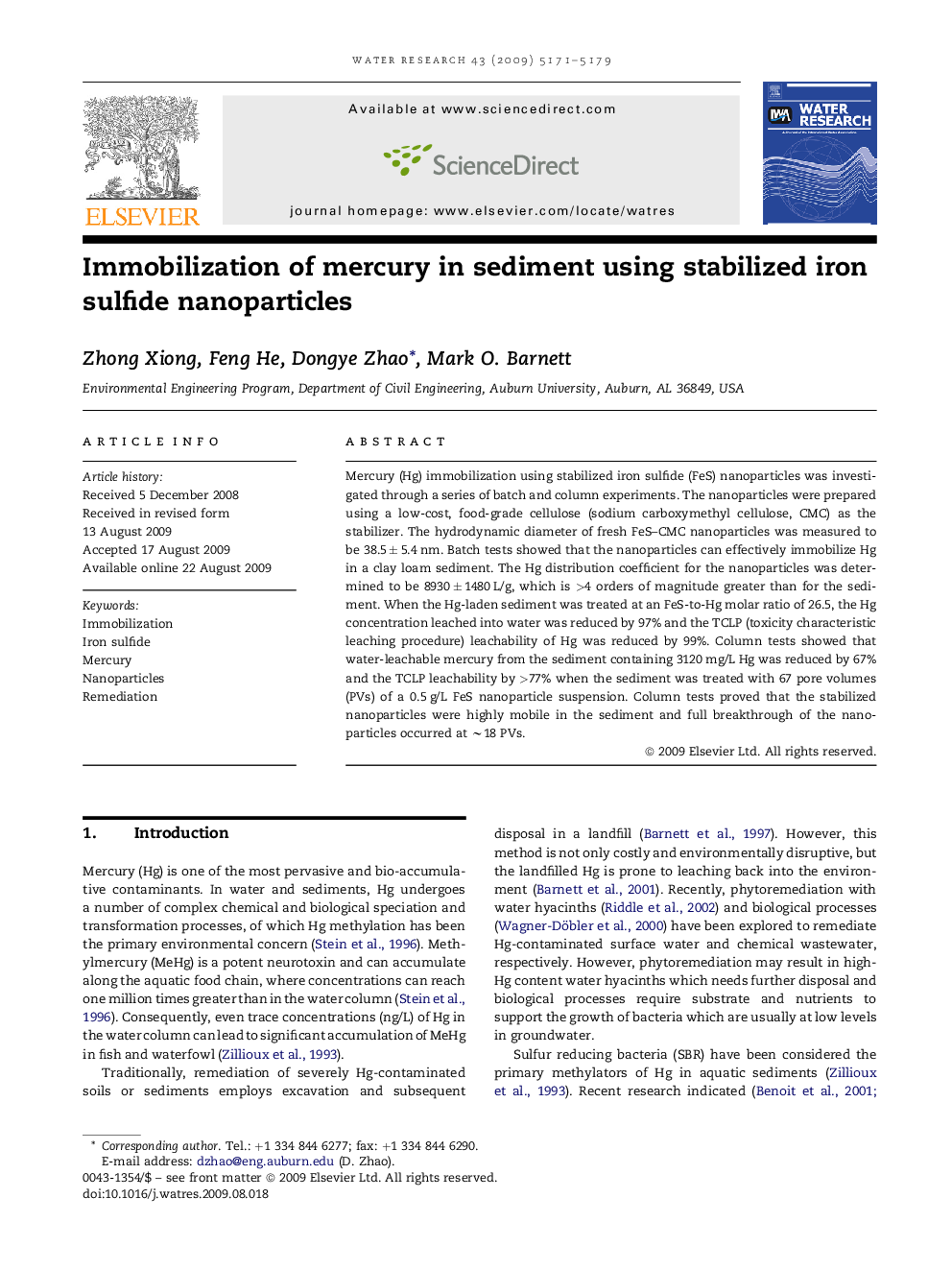| Article ID | Journal | Published Year | Pages | File Type |
|---|---|---|---|---|
| 4485381 | Water Research | 2009 | 9 Pages |
Mercury (Hg) immobilization using stabilized iron sulfide (FeS) nanoparticles was investigated through a series of batch and column experiments. The nanoparticles were prepared using a low-cost, food-grade cellulose (sodium carboxymethyl cellulose, CMC) as the stabilizer. The hydrodynamic diameter of fresh FeS–CMC nanoparticles was measured to be 38.5 ± 5.4 nm. Batch tests showed that the nanoparticles can effectively immobilize Hg in a clay loam sediment. The Hg distribution coefficient for the nanoparticles was determined to be 8930 ± 1480 L/g, which is >4 orders of magnitude greater than for the sediment. When the Hg-laden sediment was treated at an FeS-to-Hg molar ratio of 26.5, the Hg concentration leached into water was reduced by 97% and the TCLP (toxicity characteristic leaching procedure) leachability of Hg was reduced by 99%. Column tests showed that water-leachable mercury from the sediment containing 3120 mg/L Hg was reduced by 67% and the TCLP leachability by >77% when the sediment was treated with 67 pore volumes (PVs) of a 0.5 g/L FeS nanoparticle suspension. Column tests proved that the stabilized nanoparticles were highly mobile in the sediment and full breakthrough of the nanoparticles occurred at ∼18 PVs.
